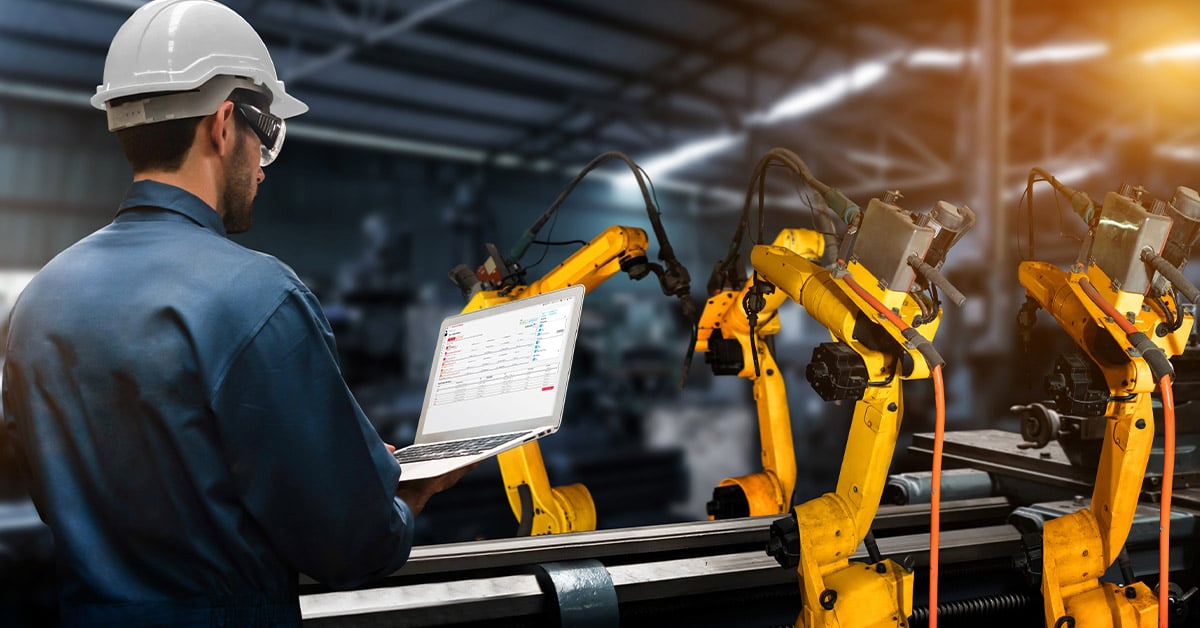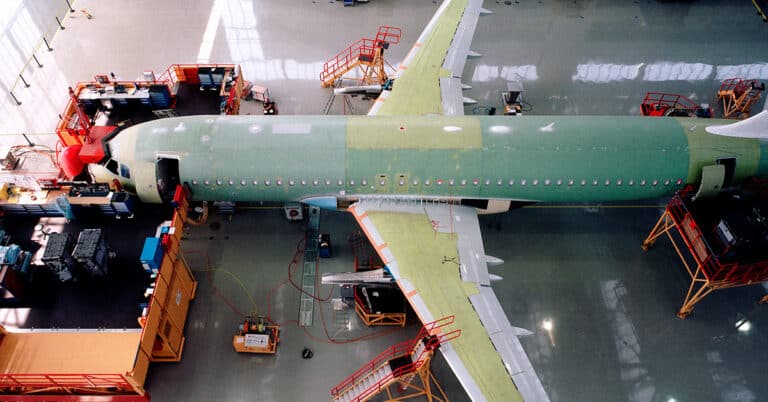Unexpected failures of manufacturing technology can cause serious headaches for organizations. If critical machinery is suddenly operating at half capacity—or not at all—the results could range from production slowdowns to complete functional failures.
What if there was a way to expect the unexpected? This is the emerging role of AI in predictive maintenance. By using machine learning (ML) algorithms to underpin larger AI frameworks, companies can collect historic and current data to anticipate failures before they happen and take action to reduce the risk. For example, AI can be used to identify patterns that could lead to trouble such as changes in power draw, vibration spikes or temperature drift.
Although the terms are often used interchangeably, artificial intelligence and ML are not the same thing. ML is a subset of AI that enables systems to learn from data and adapt over time. Deep learning takes this further, using layered neural networks that are modeled after how the human brain processes information to uncover complex patterns and insights.
In this piece, we’ll examine the foundation and applications of AI in predictive maintenance, dive into common use cases, and explore some key benefits of AI in manufacturing efforts.
AI’s foundation for predictive maintenance
Artificial intelligence tools are designed to mimic human intelligence when it comes to specific jobs or tasks, allowing these tasks to be completed automatically instead of manually.
In the case of predictive maintenance, AI models can analyze current operational conditions and look for indications that a piece of equipment may fail in the future—even if it hasn’t displayed any overt operational issues. By assessing current machine performance against baseline data, AI tools can pinpoint small reductions in efficiency that may suggest the need for maintenance. Teams are then alerted to these needs and can replace specific parts before failure occurs.
Key AI components
For AI systems and tools to function effectively, two components are needed: reliable access to data and machine learning algorithms.
First up is data. To evaluate machine performance and the need for maintenance, AI solutions require continuous access to historical and current data. This includes information about specific machine performance, how it works within the larger production line and any data about deviations from the norm.
When it comes to predictive maintenance and machine learning, meanwhile, it’s all about algorithms. These AI algorithms are sets of predefined rules and instructions that describe the process of ingesting, analyzing and connecting data sets. As the name indicates, the algorithms are capable of learning over time as they begin to pinpoint patterns in data. ML algorithms also play a critical role in separating the signal from the noise. Signals are relevant data points, while noise is everything else.
AI’s capability for predictive maintenance is also tied to the rise of Industry 4.0, which sees manufacturing technologies connected via the Industrial Internet of Things (IIoT). These “smart factories” offer massive datasets for companies to collect and utilize for predictive maintenance—so long as they have the right ML algorithms and AI frameworks in place.

How is AI used in manufacturing and maintenance
AI offers multiple use cases for manufacturing and maintenance including:
Improved overall equipment effectiveness (OEE)
By assessing production processes end-to-end, AI tools can help companies pinpoint and resolve areas of friction. For example, artificial intelligence frameworks might discover a disconnect between two stages of component assembly: Where the first stage might produce 10 components per hour, the second might only be able to handle five per hour, in turn causing a productivity loss.
Armed with this information, companies could purchase and install additional machinery for the second stage, in turn improving overall equipment effectiveness.
Total productive maintenance (TPM)
TPM looks to improve operations by having all staff—not just maintenance teams—participate in maintenance. This includes front-line staff, equipment operators, managers and engineers. By including more people in maintenance efforts, companies can improve their chances of detecting potential problems.
Accomplishing this goal, however, requires the use of AI tools capable of collecting maintenance data and making it available to staff on demand.
Planned preventative maintenance (PPM)
PPM is scheduled maintenance designed to reduce the risk of failures by creating a set of routine maintenance activities performed at regular intervals on key operational technologies. While PPM can be conducted without the use of AI, artificial intelligence tools can help pinpoint high-value areas of maintenance that should be prioritized.
Predictive maintenance
AI-based predictive maintenance services, meanwhile, are an extension of TPM and PPM. Instead of focusing on what’s currently happening or creating maintenance schedules based on past data to inform ongoing work, predictive maintenance looks ahead to what could happen if current conditions remain the same, or what might happen if things change. This allows companies to proactively address issues that haven’t happened yet and reduce their potential impact.
Benefits of AI in maintenance
Implementing AI in maintenance offers several benefits for companies, such as:
Lower costs
While proactively addressing issues comes with the cost of maintenance and repair, it’s much less costly than fixing problems after the fact. This is because post-failure fixes come with the added costs of production line shutdowns and lower product outputs.
By addressing problems as early as possible, businesses can save money over time thanks to reduced spare parts consumption, a reduction in rush orders and better scheduling capabilities.
Keeping machinery in prime condition not only helps extend its life but also supports a safer work environment. Reliable equipment reduces the likelihood of unexpected issues, helping minimize downtime and avoid costly disruptions.
Process improvement
AI also helps improve overall production processes. This happens in two ways.
First, AI solutions can pinpoint areas that may benefit from specific improvements to enhance production outcomes. Using data from IIoT-connected devices and sensors, AI tools can discover process patterns that lead to inefficiencies and determine ways to correct them.
AI can also track performance over time to determine where failures are most likely to occur, in turn making it easier for teams to create targeted PPM schedules.
Extended equipment lifecycle
Sudden and serious equipment failures may require more than costly repairs; they may demand the entire (and very expensive) replacement of production machinery. With AI assistance, however, companies can proactively address emerging issues and extend the overall equipment lifecycle.
Challenges when implementing AI for predictive maintenance
Transitioning to new technology is a significant step, and preparation is key to success. As manufacturers integrate artificial intelligence into their operations, some challenges may arise. Here are a few common considerations when implementing AI into a maintenance strategy:
- Data quality issues such as incomplete historical datasets
- Lack of a plan for regular sensor calibration, ongoing data hygiene and equipment connectivity
- Difficulties in IT/OT integration and collaboration
- Workforce readiness and change management
- Worrying about short-term costs over long-term ROI
- Neglecting cybersecurity needs
Staying ahead of the issues with AI
The more you know—and the earlier you know it—the better.
This is the benefit of AI-powered predictive maintenance. By pinpointing potential problems, companies can take proactive action and stay ahead of expensive and disruptive issues, in turn reducing total maintenance costs, improving overall operational efficiency and increasing total equipment lifecycles.
Ready to see what AI-driven predictive maintenance analysis can do for your organization? From OEE to TPM, PPM and predictive maintenance services, ATS has you covered. Our skilled technicians can help you put sensor data and technology-driven tools into actionable insights for a strong predictive maintenance plan. With ATS as your IIoT integration partner, you’ll put your operations in the best position for success. Let’s talk.






